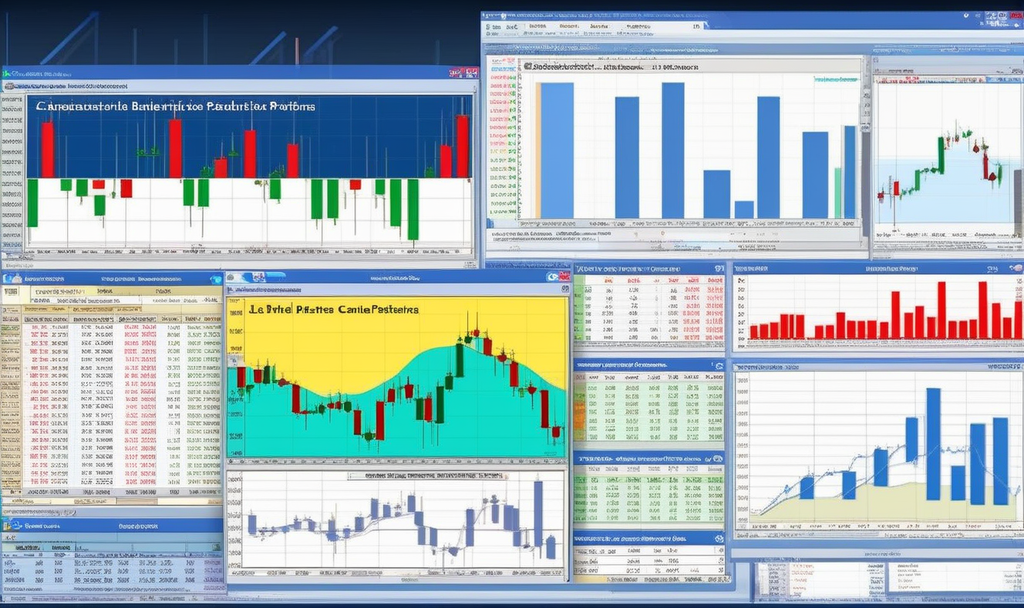Candlestick patterns are powerful tools in the world of financial analysis, offering valuable insights into market trends and potential price movements. Whether you’re a seasoned trader or just starting, understanding candlestick patterns is essential for making informed decisions. In this beginner’s tutorial, we’ll delve into the fundamentals of candlestick patterns, exploring their significance and how to interpret them effectively.
The Basics of Candlestick Patterns
To begin our journey into understanding candlestick patterns, let’s first establish what they are. Candlestick patterns are graphical representations of price movements in a specified time frame, typically used in financial charts. Each candlestick consists of a body and wicks, providing visual cues about the market’s open, close, high, and low prices.
The Anatomy of a Candlestick
A typical candlestick has a body that represents the opening and closing prices, while the wicks or shadows extend above and below the body, indicating the high and low prices within the given time period. The color of the candlestick – often green or red – signifies whether the closing price was higher or lower than the opening price.
Now, let’s delve into the key phrase of our tutorial: understanding candlestick patterns.
Recognizing Common Candlestick Patterns
- Doji Patterns:
- A Doji occurs when the opening and closing prices are virtually the same, resulting in a small or nonexistent body.
- Understanding Candlestick Patterns Tip 1: Keep an eye on Doji patterns, as they signal market indecision and potential trend reversals.
- Engulfing Patterns:
- An engulfing pattern involves one candlestick completely overshadowing the previous one, indicating a strong shift in market sentiment.
- Understanding Candlestick Patterns Tip 2: Look for bullish engulfing patterns in uptrends and bearish engulfing patterns in downtrends.
- Hammer and Hanging Man Patterns:
- These patterns feature a small body and a long lower wick, resembling a hammer or hanging man.
- Understanding Candlestick Patterns Tip 3: Hammers suggest potential bullish reversals, while hanging man patterns indicate possible bearish reversals.
- Morning and Evening Star Patterns:
- Comprising three candles, these patterns signal potential trend reversals.
- Understanding Candlestick Patterns Tip 4: A morning star indicates a bullish reversal, while an evening star suggests a bearish reversal.
Applying Candlestick Patterns in Trading
Now that we’ve covered some common candlestick patterns, let’s discuss how to apply this knowledge in real-world trading scenarios.
Risk Management Strategies
Understanding Candlestick Patterns Tip 5: Before entering a trade based on candlestick patterns, set clear stop-loss and take-profit levels to manage risk effectively. This ensures you don’t expose yourself to significant losses in volatile markets.
Timeframe Considerations
When interpreting candlestick patterns, it’s crucial to consider the timeframe of the chart you’re analyzing. Short-term traders may focus on patterns within shorter timeframes, while long-term investors might look at patterns over more extended periods.
Understanding Candlestick Patterns Tip 6: Adjust your analysis based on the timeframe relevant to your trading strategy, as patterns may vary across different timeframes.
Pitfalls to Avoid in Candlestick Analysis
While candlestick patterns provide valuable insights, it’s essential to be aware of potential pitfalls that can lead to misinterpretation.
Understanding Candlestick Patterns Tip 7: Avoid relying solely on candlestick patterns. Use them in conjunction with other technical analysis tools and indicators for a more comprehensive view of market conditions.
Understanding_Candlestick Patterns Tip 8: Active voice strengthens your writing, making it more direct and compelling. Instead of saying, “The pattern was identified by traders,” opt for “Traders identified the pattern.”
If you have any question about this article, please contact us …
You can easily create a free cryptocurrency wallet with binance …
Conclusion
In this beginner’s tutorial, we’ve delved into the world of candlestick patterns, from their basic anatomy to recognizing common patterns and applying them in trading. By understanding candlestick patterns, you empower yourself with a valuable tool for navigating the complex landscape of financial markets.
Remember, the key to successful trading lies not only in identifying patterns but also in combining them with robust risk management strategies and considering the broader market context. As you embark on your journey, keep honing your skills, and may your understanding of candlestick patterns guide you to informed and profitable decisions in the dynamic world of finance.

